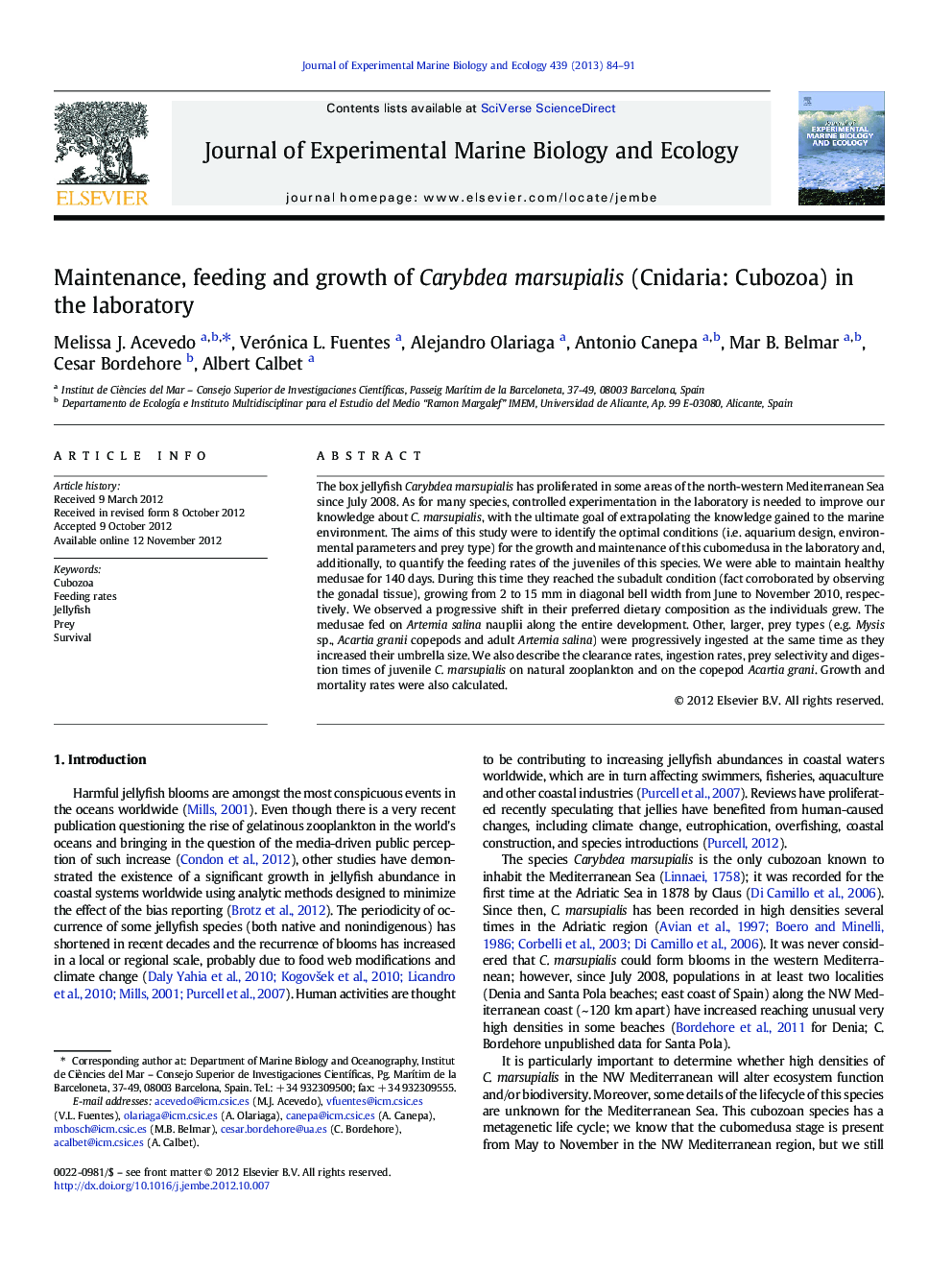| Article ID | Journal | Published Year | Pages | File Type |
|---|---|---|---|---|
| 4395883 | Journal of Experimental Marine Biology and Ecology | 2013 | 8 Pages |
The box jellyfish Carybdea marsupialis has proliferated in some areas of the north-western Mediterranean Sea since July 2008. As for many species, controlled experimentation in the laboratory is needed to improve our knowledge about C. marsupialis, with the ultimate goal of extrapolating the knowledge gained to the marine environment. The aims of this study were to identify the optimal conditions (i.e. aquarium design, environmental parameters and prey type) for the growth and maintenance of this cubomedusa in the laboratory and, additionally, to quantify the feeding rates of the juveniles of this species. We were able to maintain healthy medusae for 140 days. During this time they reached the subadult condition (fact corroborated by observing the gonadal tissue), growing from 2 to 15 mm in diagonal bell width from June to November 2010, respectively. We observed a progressive shift in their preferred dietary composition as the individuals grew. The medusae fed on Artemia salina nauplii along the entire development. Other, larger, prey types (e.g. Mysis sp., Acartia granii copepods and adult Artemia salina) were progressively ingested at the same time as they increased their umbrella size. We also describe the clearance rates, ingestion rates, prey selectivity and digestion times of juvenile C. marsupialis on natural zooplankton and on the copepod Acartia grani. Growth and mortality rates were also calculated.
► An aquarium for C. marsupialis should have the right circulation and lightning. ► There are some differences in the maintenance of the different stages. ► Provide abundantly different types of preys to the cubomedusae. ► Knowledge gained from experiments could be extrapolated to the marine environment.
